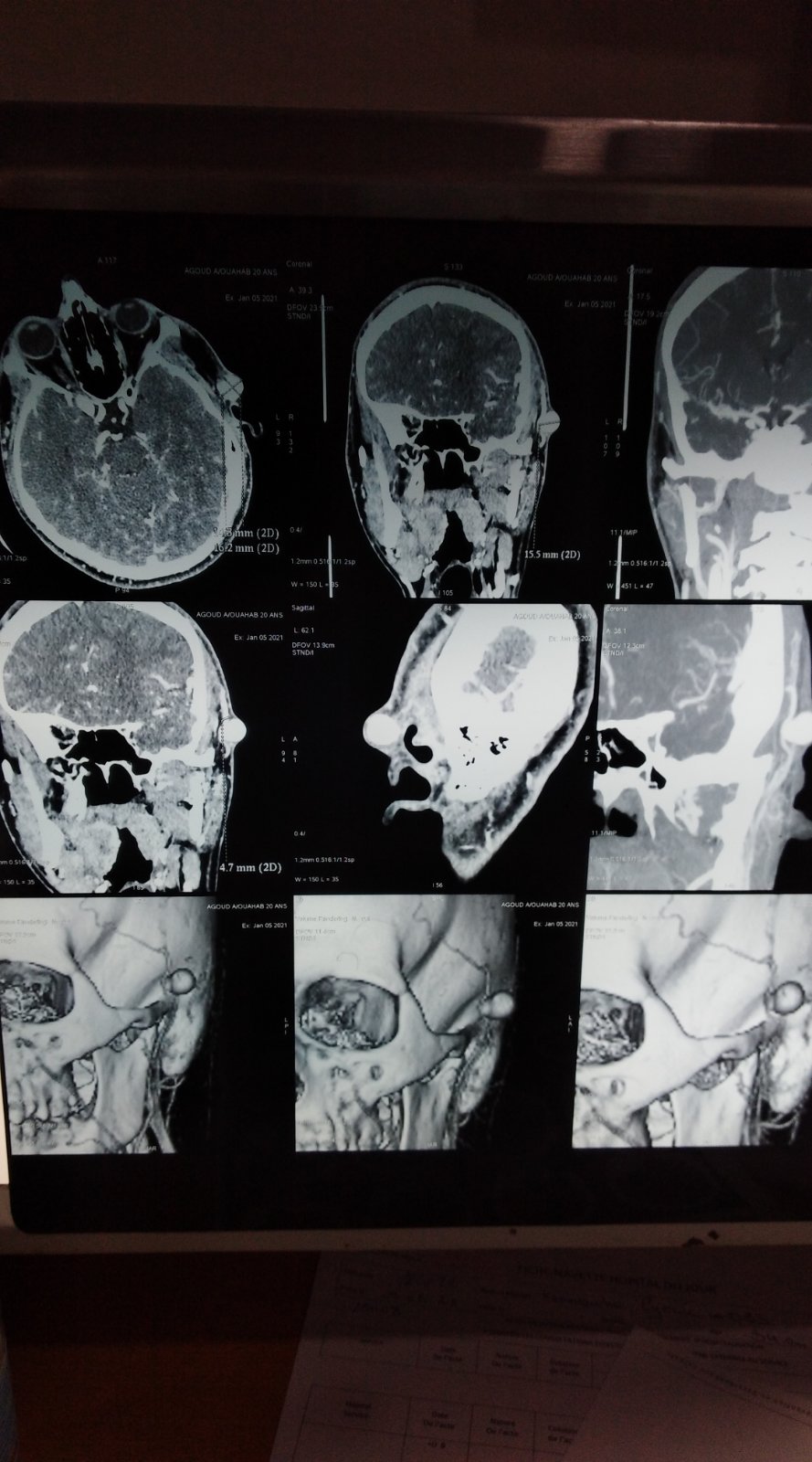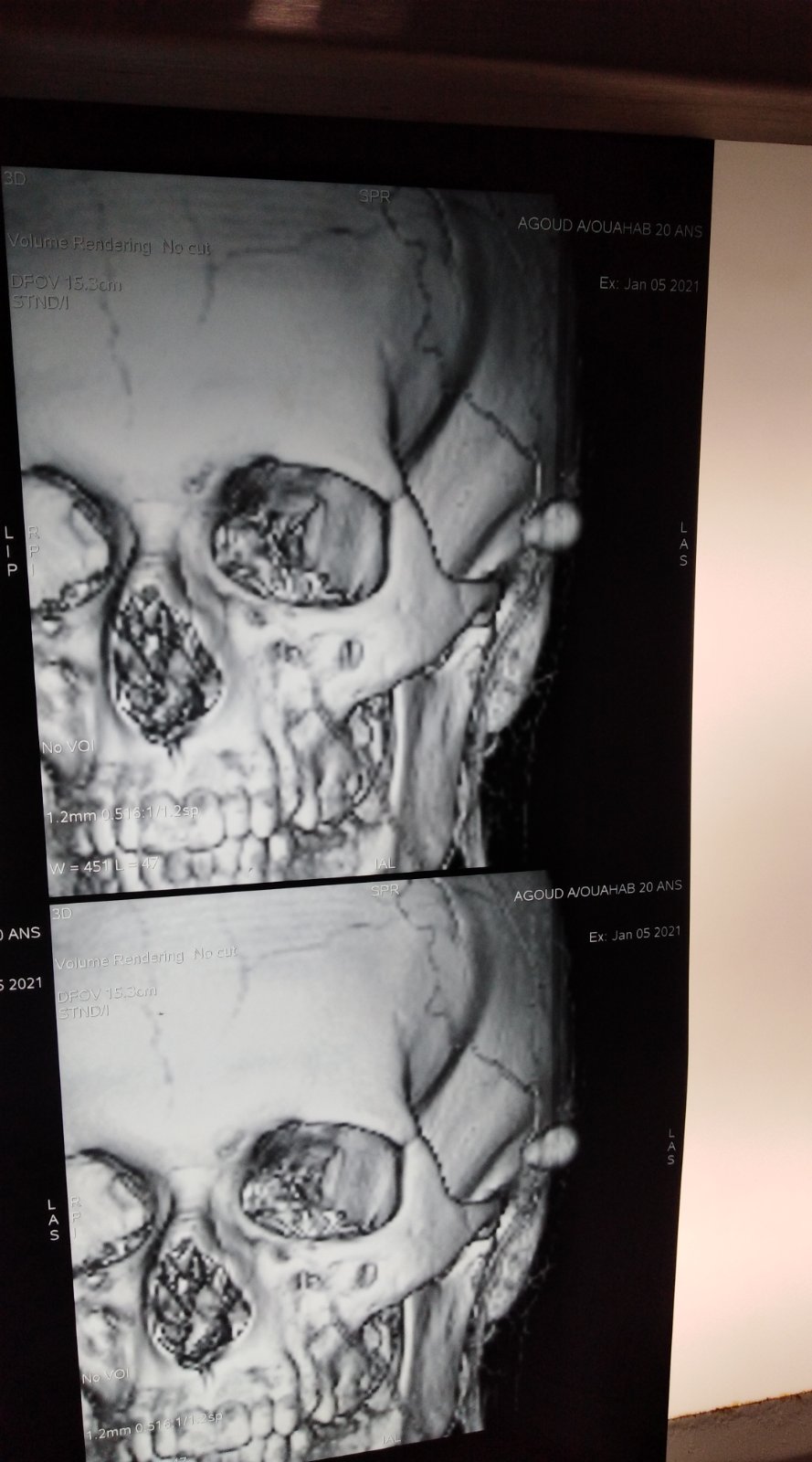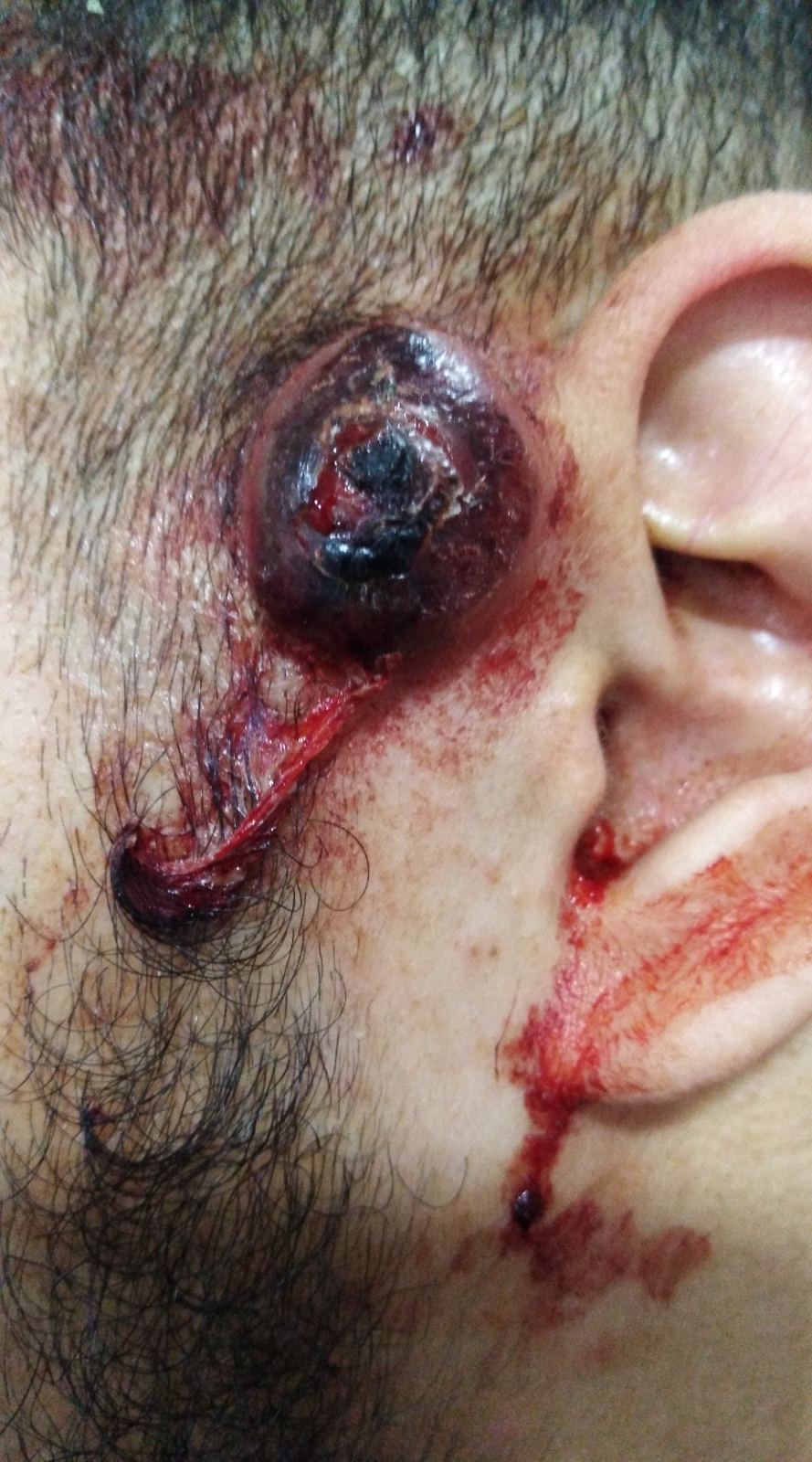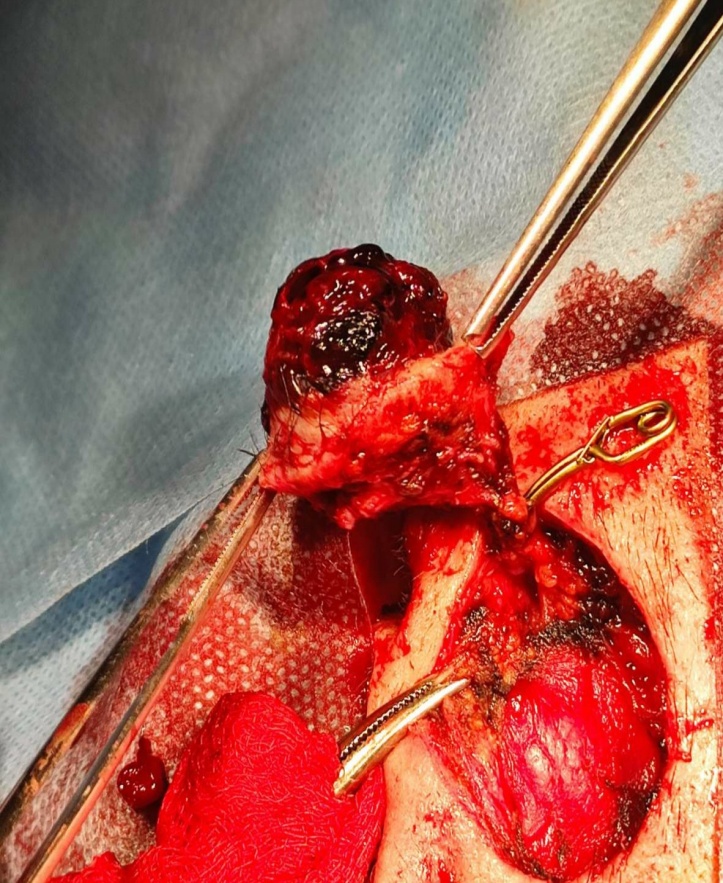Clinical Case Reports and Clinical Study
OPEN ACCESS | Volume 12 - Issue 5 - 2025
ISSN No: 2766-8614 | Journal DOI: 10.61148/2766-8614/JCCRCS
H. Bekralas 1* and n. Habchi 2
1Head of Department of Neurosurgery, Bejaia University Hospital, Bejaia, Algeria
2Neurosurgery Department, Mustapha Pacha University Hospital, Algiers, Algeria
*Corresponding author: H. Bekralas, Head of Department of Neurosurgery, Bejaia University Hospital, Bejaia, Algeria
Received date: January 31, 2021
Accepted date: February 17, 2021
Published date: February 19, 2021
Citation: H. Bekralas, n. Habchi. “Post-Traumatic False Anevrysm Of The Superficial Temporal Artery: Case Report”. J Clinical Case Reports and Clinical Study, 2(2); DOI: 10.61148/2766-8614/JCCRCS/019
Copyright: © 2021 H. Bekralas. This is an open access article distributed under the Creative Commons Attribution License, which permits unrestricted use, distribution, and reproduction in any medium, provided the original work is properly Cited.
Pseudo aneurysms or false aneurysms originating from the superficial temporal artery (STA) are rare and often seen as facial swellings. These forms of aneurysms often involve the intima and media layers of the arterial wall. So far only single cases have been reported at various locations across the world since 1644. We report a unique case of traumatic STA pseudo aneurysms.
We present a 20-year-old man hospitalized in the neurosurgery department on January 2, 2021 for treatment of a head trauma following a road accident. Clinical examination found a left temporal bruise.
Two weeks after the initial head trauma, the patient is consulted again with the progressive worsening of the swelling.The clinical examination finds a large left temporal hematoma with threat of skin necrosis, palpation finds a painful mass, left temporal pulsatile, suggesting the diagnosis of false aneurysm of the superficial temporal artery. Computed tomography angiography confirmed left STA pseudo aneurysms. We reconstructed parent artery after resecting the pseudo aneurysm. The patient recovered well with an overall good cosmetic look.
Introduction
Post-traumatic pseudo aneurysm of the superficial temporal artery (STA) is rare and secondary in 3/4 cases closed head trauma (1, 2 and 3). It is typically caused by blunt force to the temporal region, and presents as a painless, pre-auricular, pulsatile mass during the following weeks.
Case Report:
A 20-year-old patient Hospitalized in the neurosurgery department on January 2, 2021 for treatment of a head trauma following a road accident. Clinical examination found a left temporal bruise. The brain scan found a thickening of the soft subcutaneous parts next to the left temporal region without underlying post-traumatic bone lesion; in addition there is no anomaly of cortex (figure 1).


Figure 1: Brain scans of patient after the head injury
Following the progressive worsening of the swelling, the patient is consulted again in January 19, 2021 (i.e. 2 weeks after the initial head trauma), Clinical examination found a large left temporal hematoma with threat of skin necrosis, palpation found a painful mass, pulsatile left temporal, suggesting the diagnosis of false aneurysm of the superficial temporal artery (figure 2).

Figure 2 : Large left temporal hematoma with threat of skin necrosis
The patient was operated on, a ligature of the superficial temporal artery made, with flattening of the pseudo aneurysm. The operative consequences are simples (figure 3).


Figure 3: Exclusion of the aneurysm and ligation of the superficial temporal artery
Discussion:
The superficial temporal artery is a branch of the external carotid artery; it is exposed to trauma in its subcutaneous near bone path (1 and 3). False aneurysms are rare: 327 cases reported in the literature (1, 2 and 3). There is a clear male predominance (80% of cases). The age is between 20 and 40 years (60% of cases) (1, 2 and 3). The lesions are due to closed head trauma in ¾ of the cases. False aneurysms occur after arterial rupture concomitant trauma or secondary to post-traumatic necrosis of the artery. The diagnostic delay is a few weeks, in our patient, it is 02 weeks. The diagnosis is easy in the face of a painful, pulsating mass and a history of trauma. The scanner and magnetic resonance imaging are offered for diagnostic purposes. Arteriography is of no interest for diagnosis, it is performed for therapeutic purposes (endovascular treatment by embolization). Surgical treatment remains the treatment of choice, including ligation of the superficial temporal artery and flattening of the aneurysm (4 and 5). There are other therapeutic alternatives aimed at obtaining thrombosis aneurysmal (echo guided injection of intra thrombosis aneurysmal, echoes guided compression of the superficial temporal artery, endovascular embolization coils) (6).
Conclusion:
The diagnosis of post-traumatic superficial temporal artery pseudo aneurysm is easy. Surgical treatment remains the treatment of choice. Although a rare lesion, aneurysm of the superficial temporal artery must be considered in the management of forehead masses.